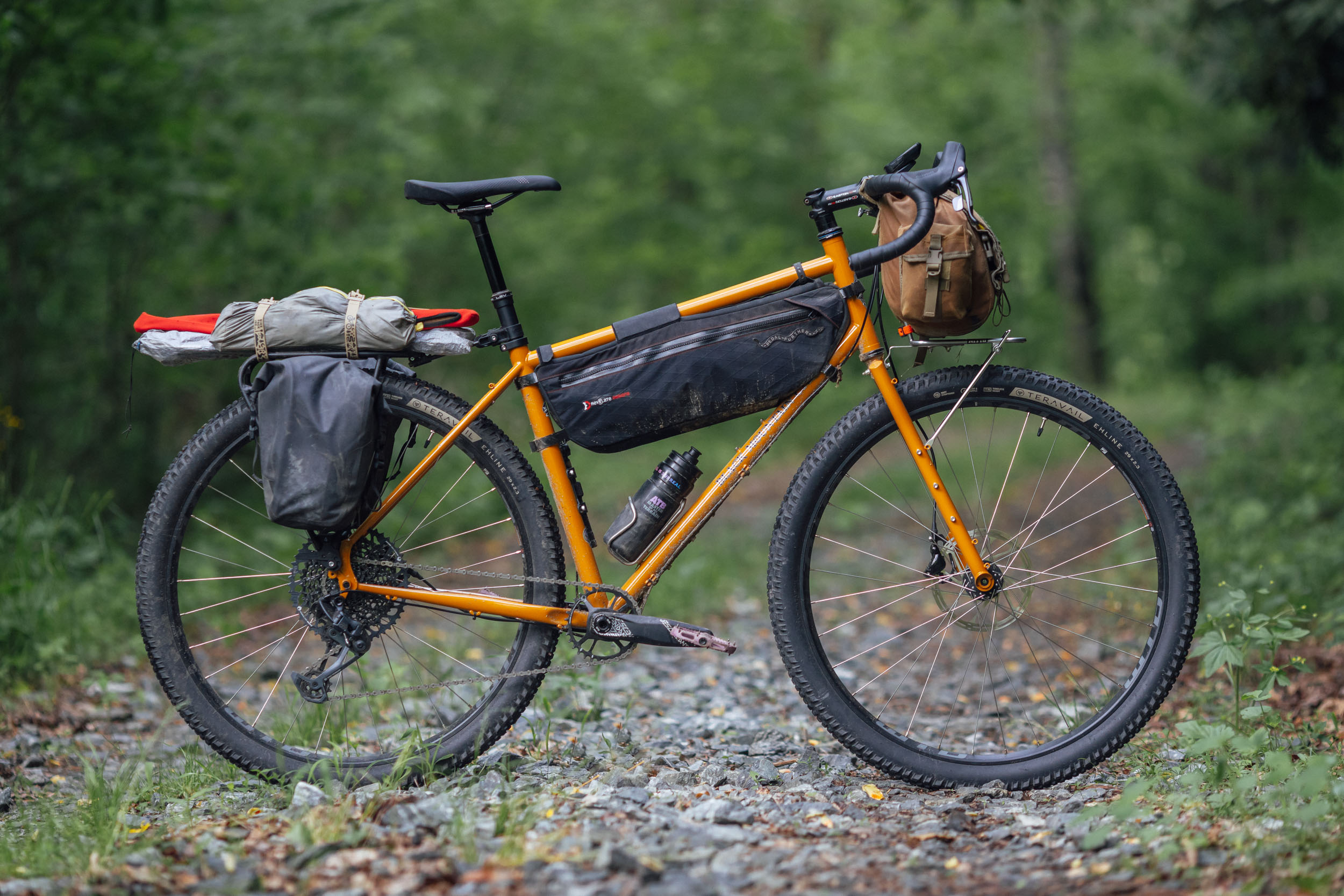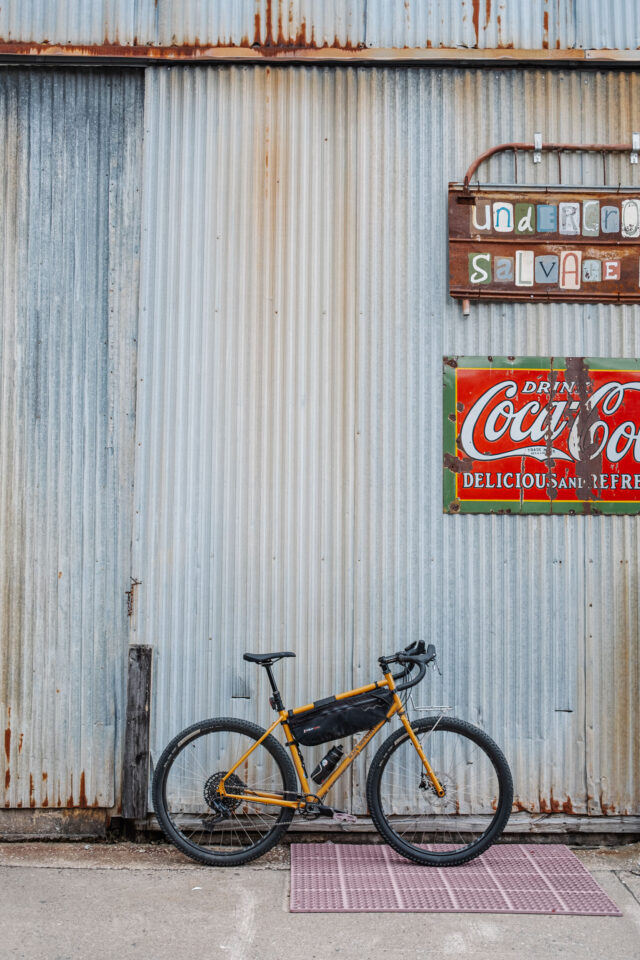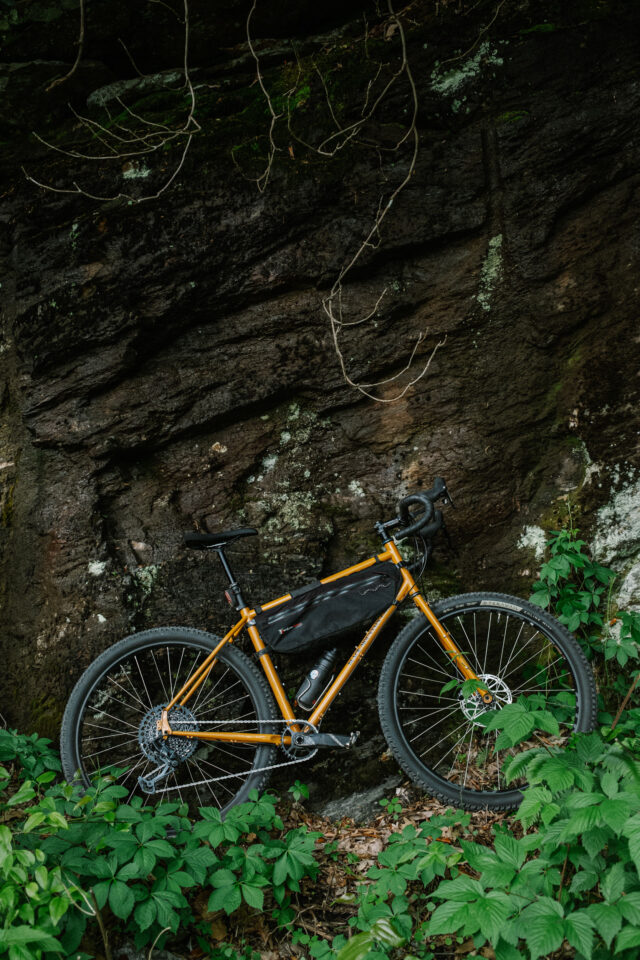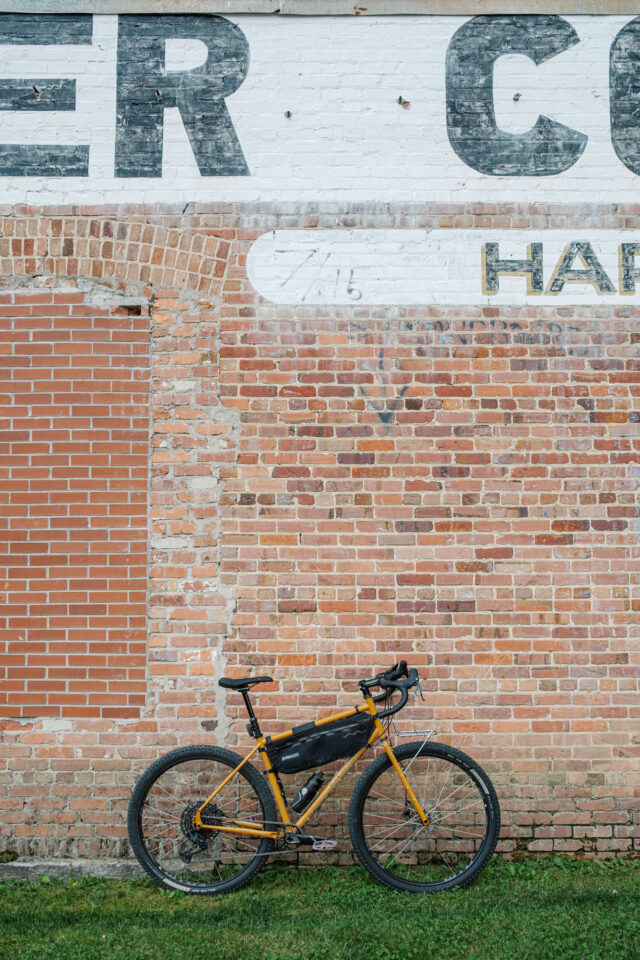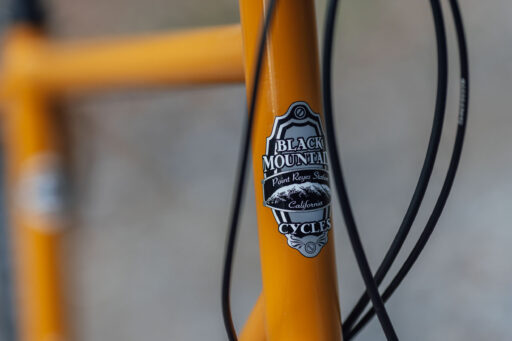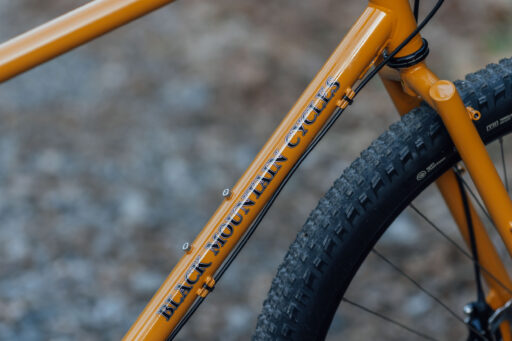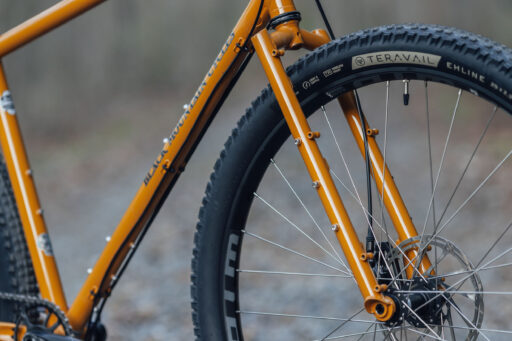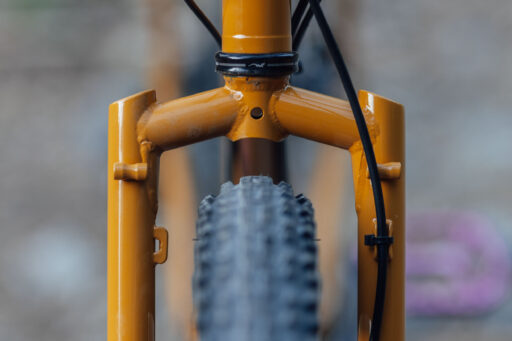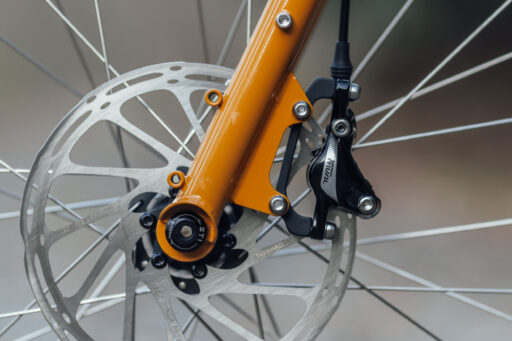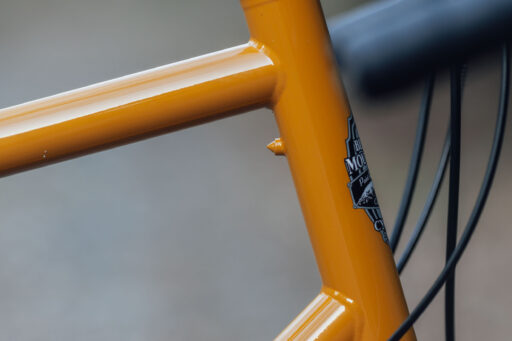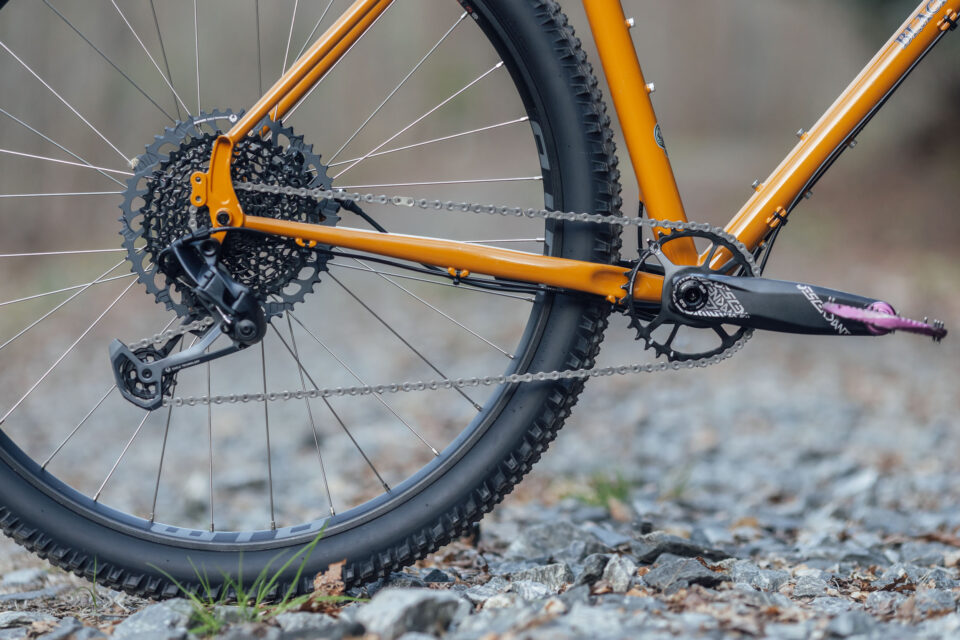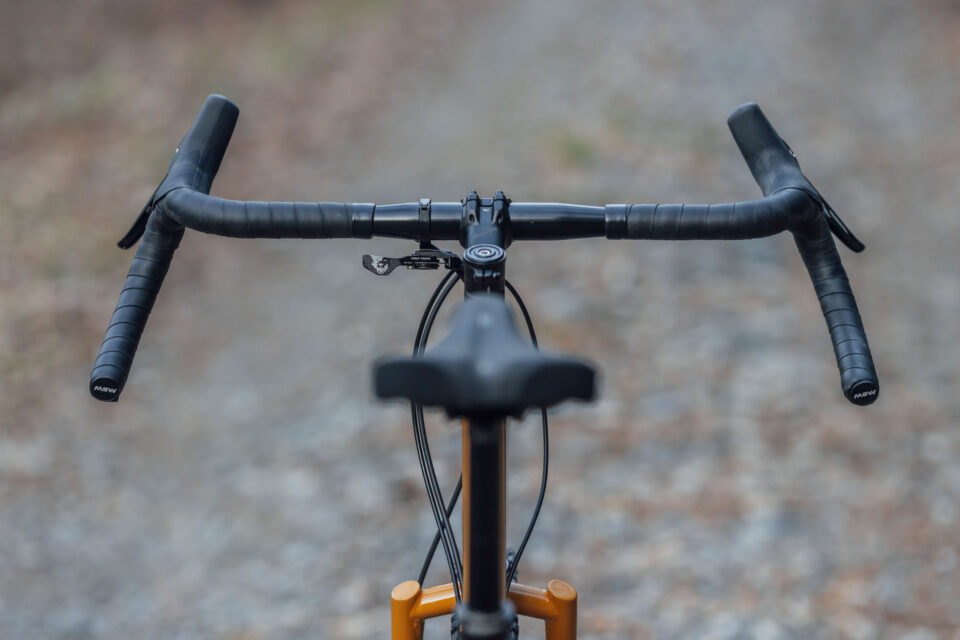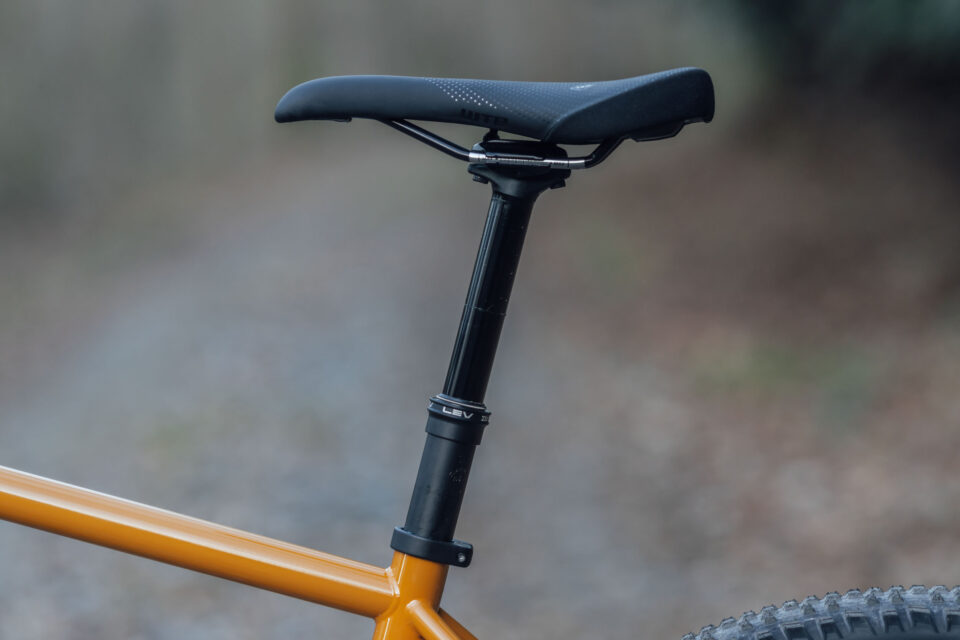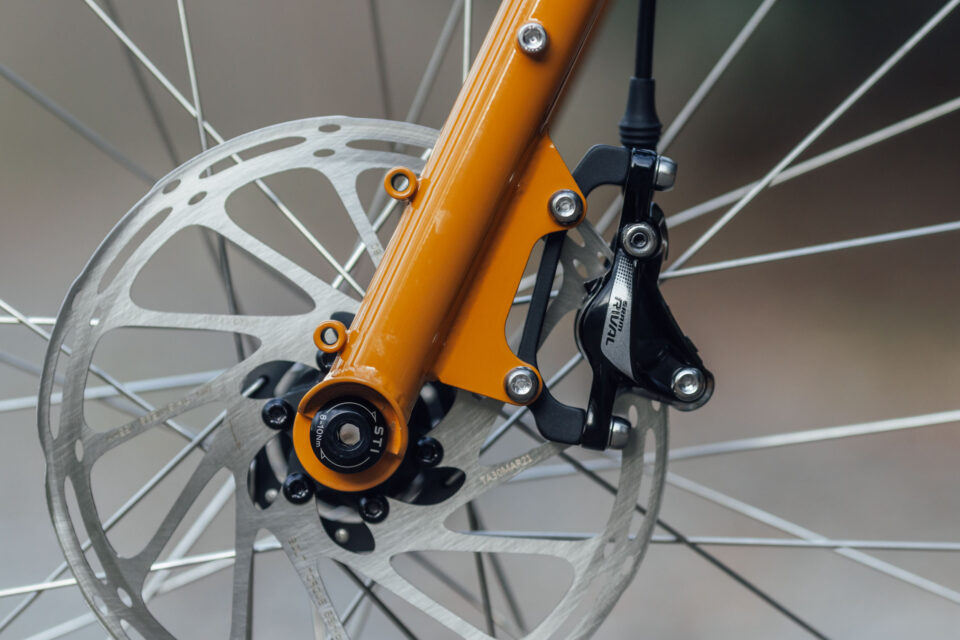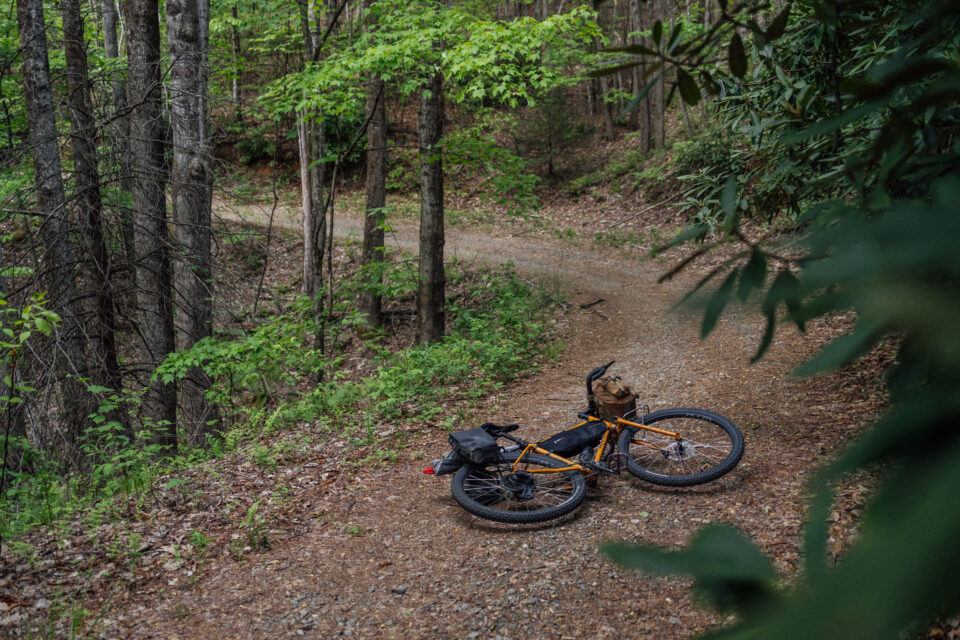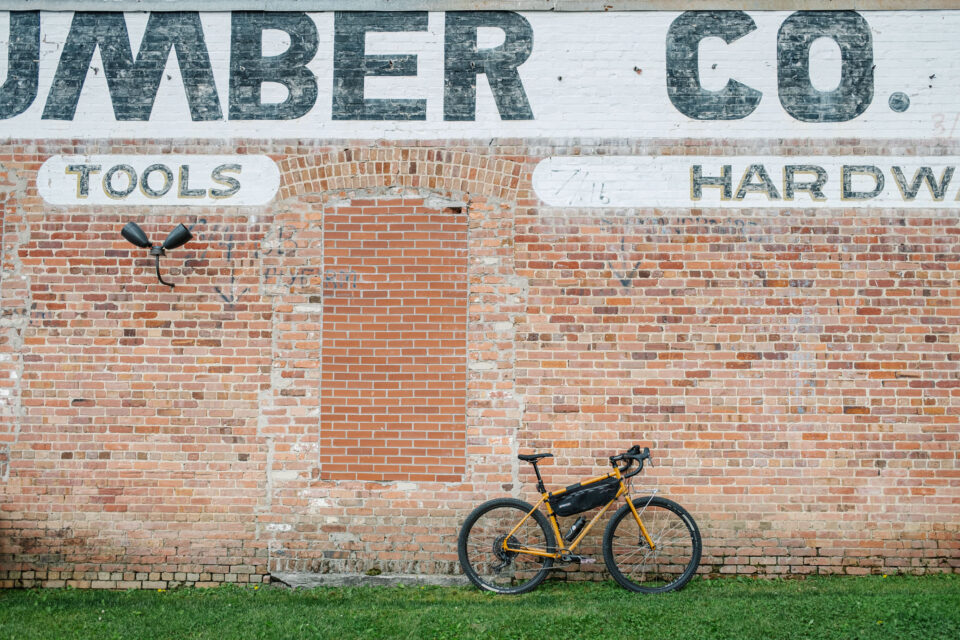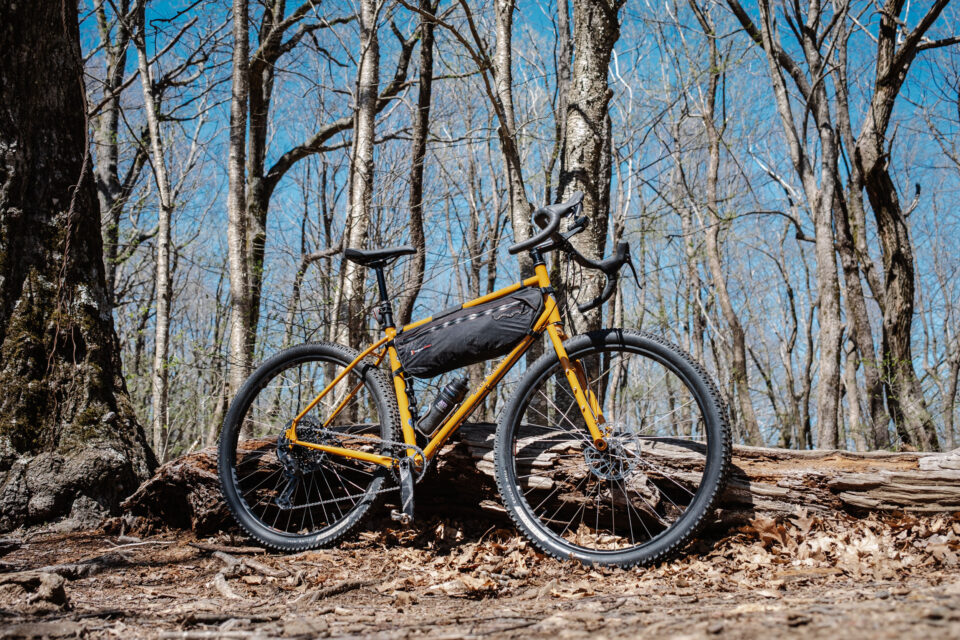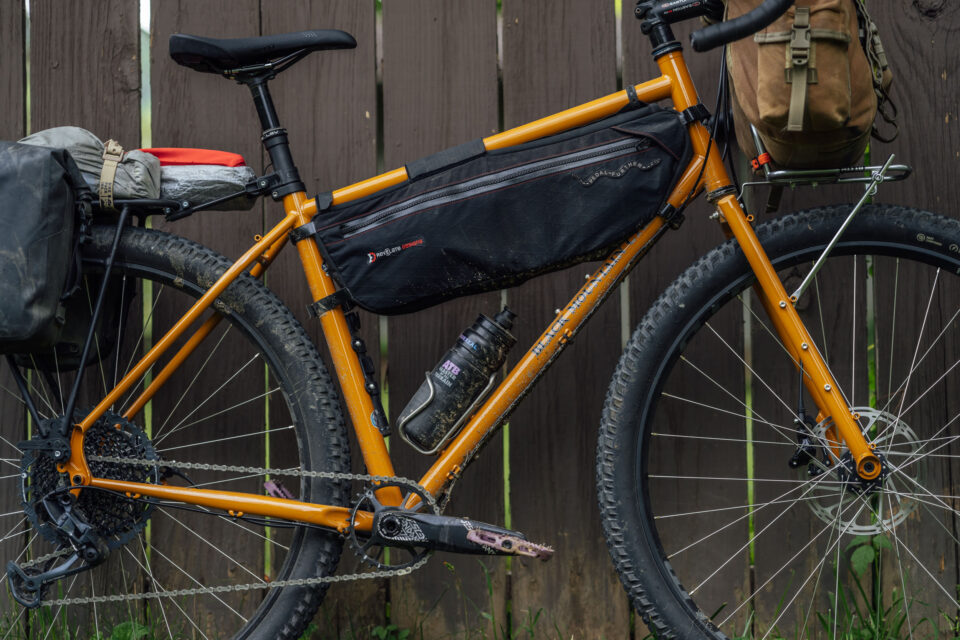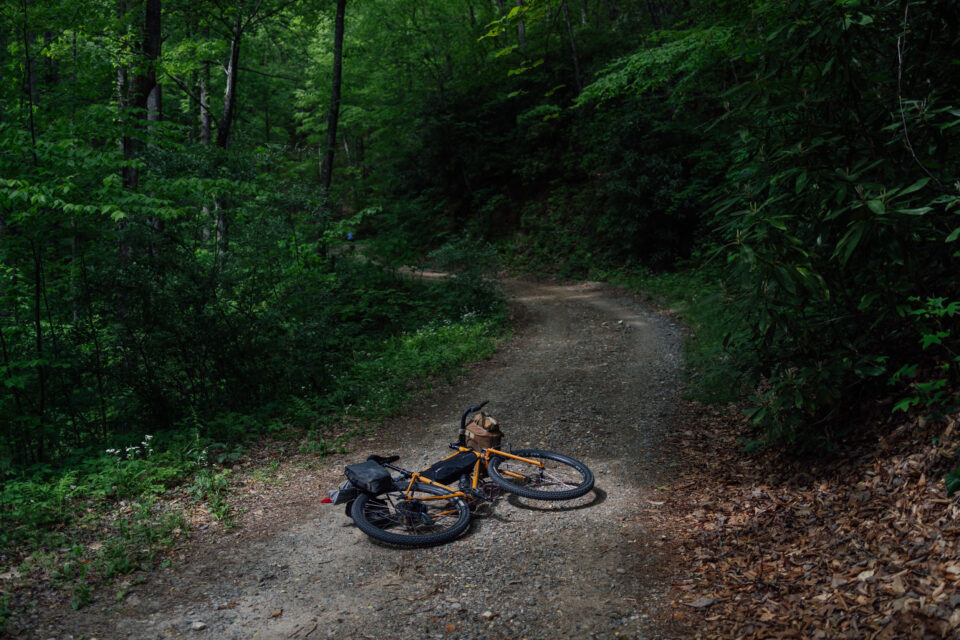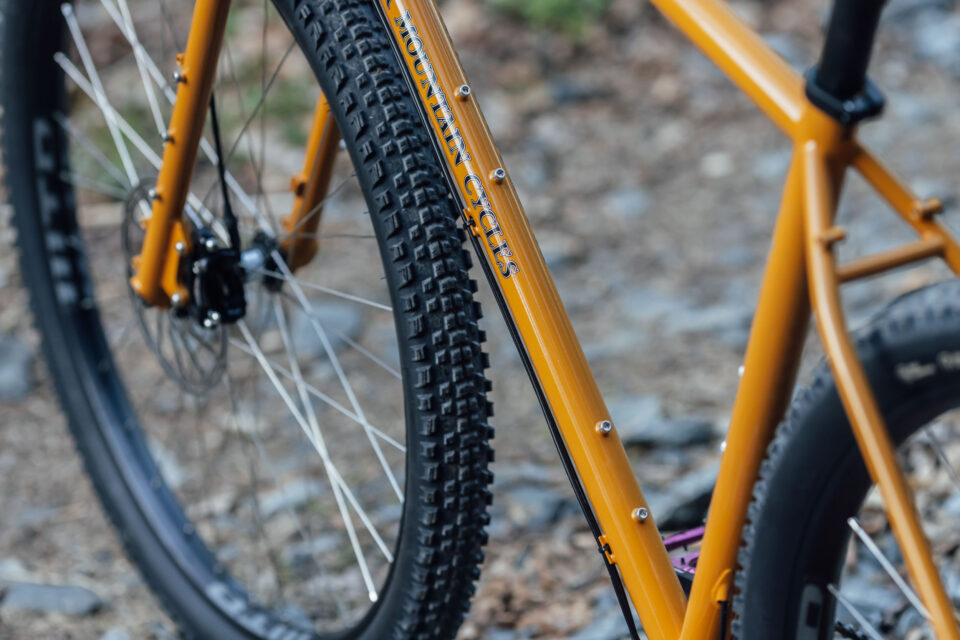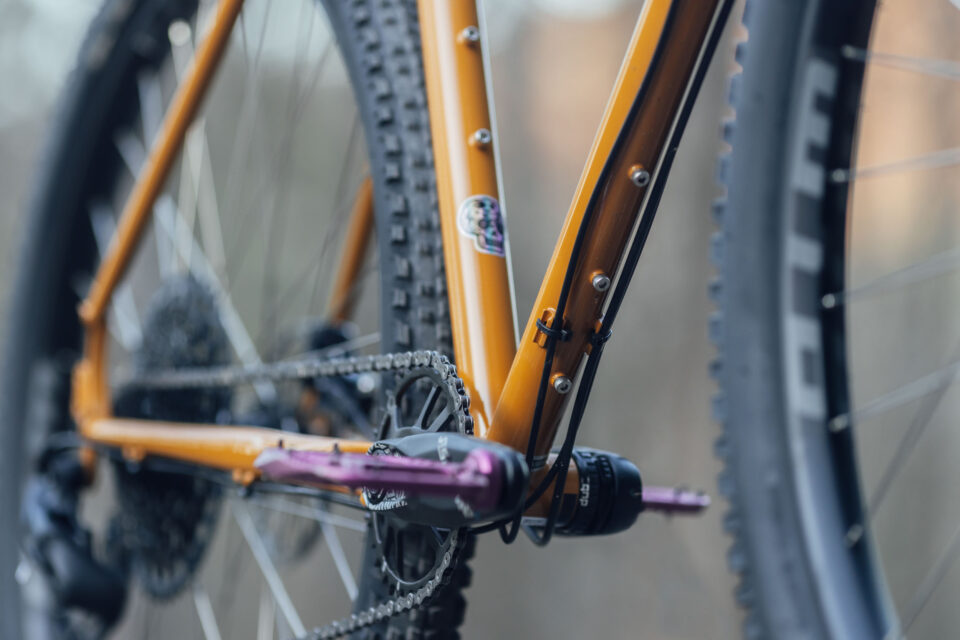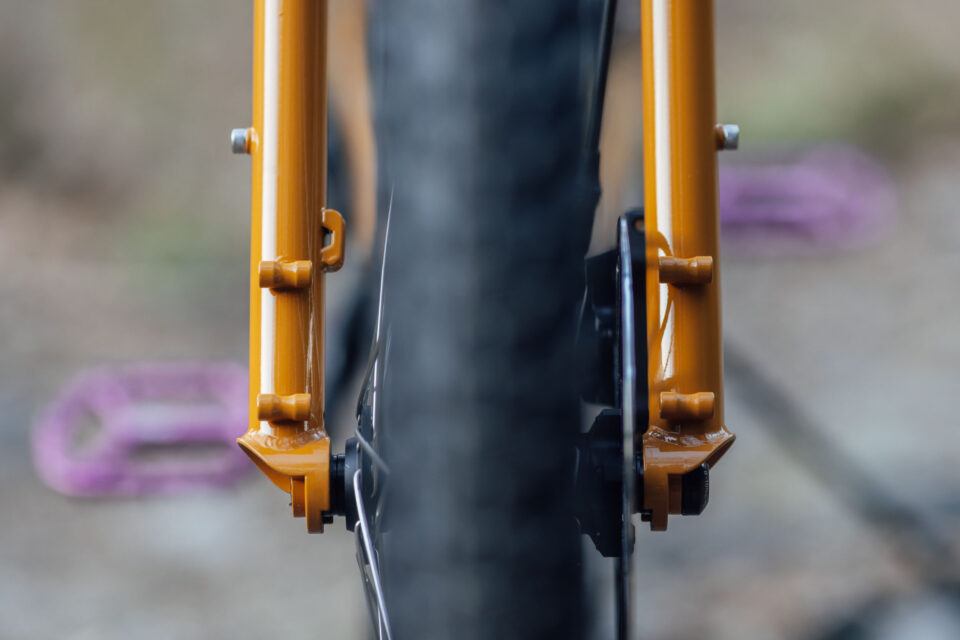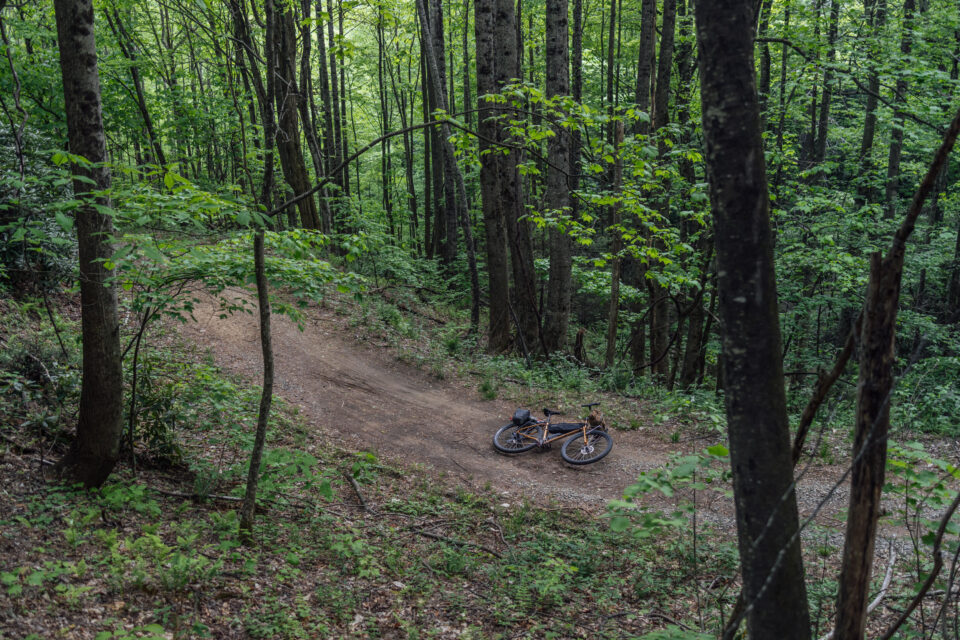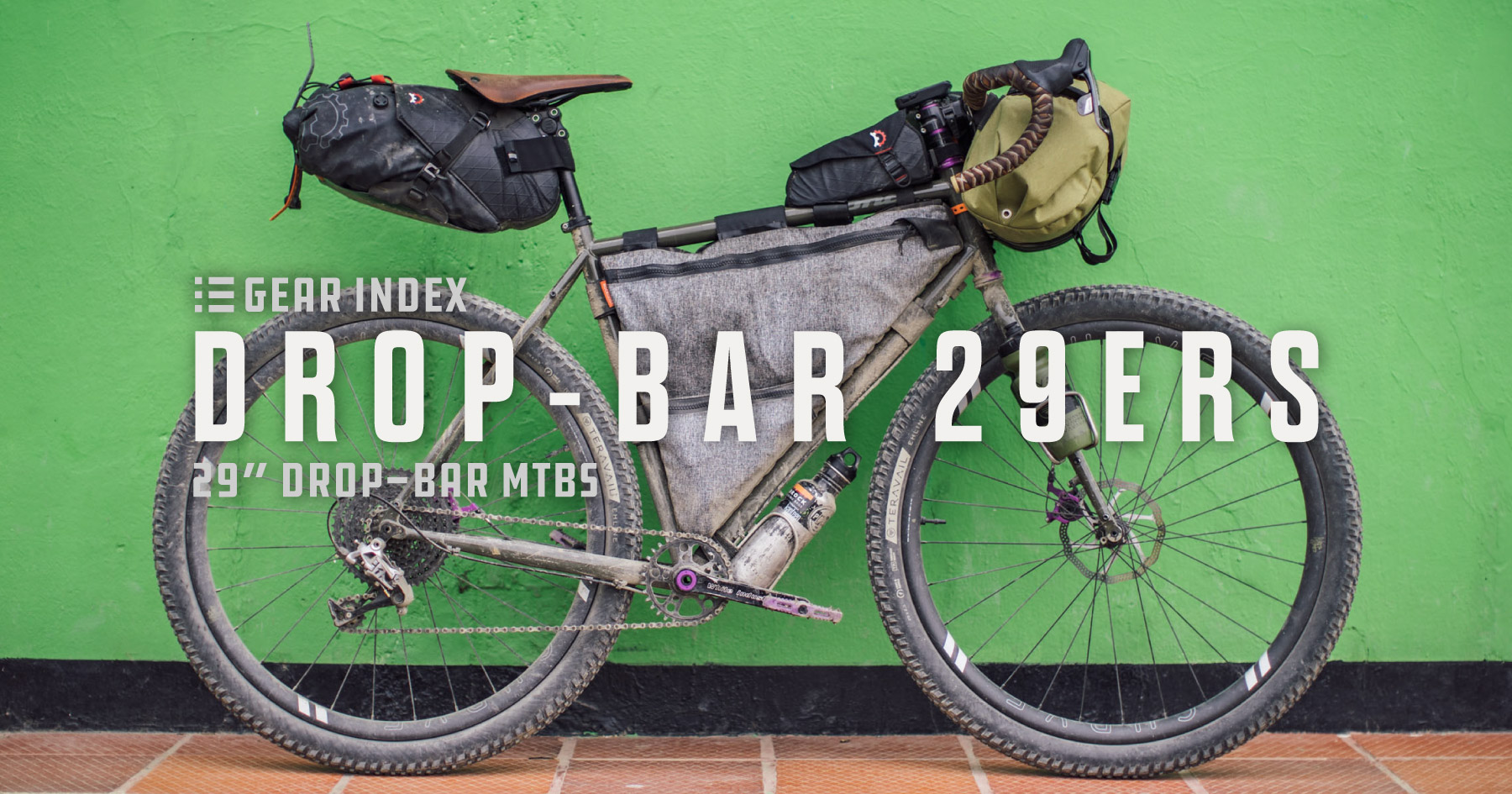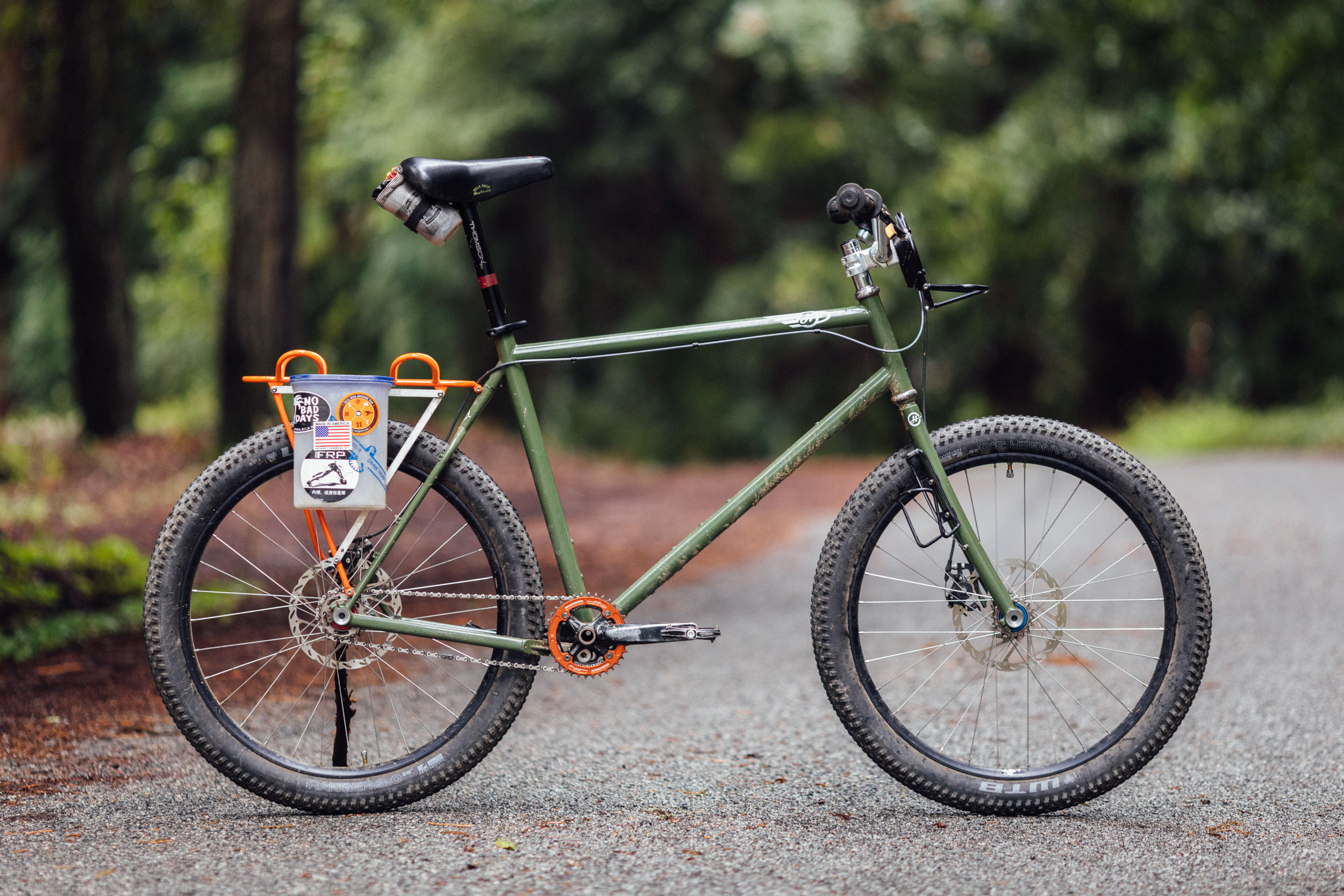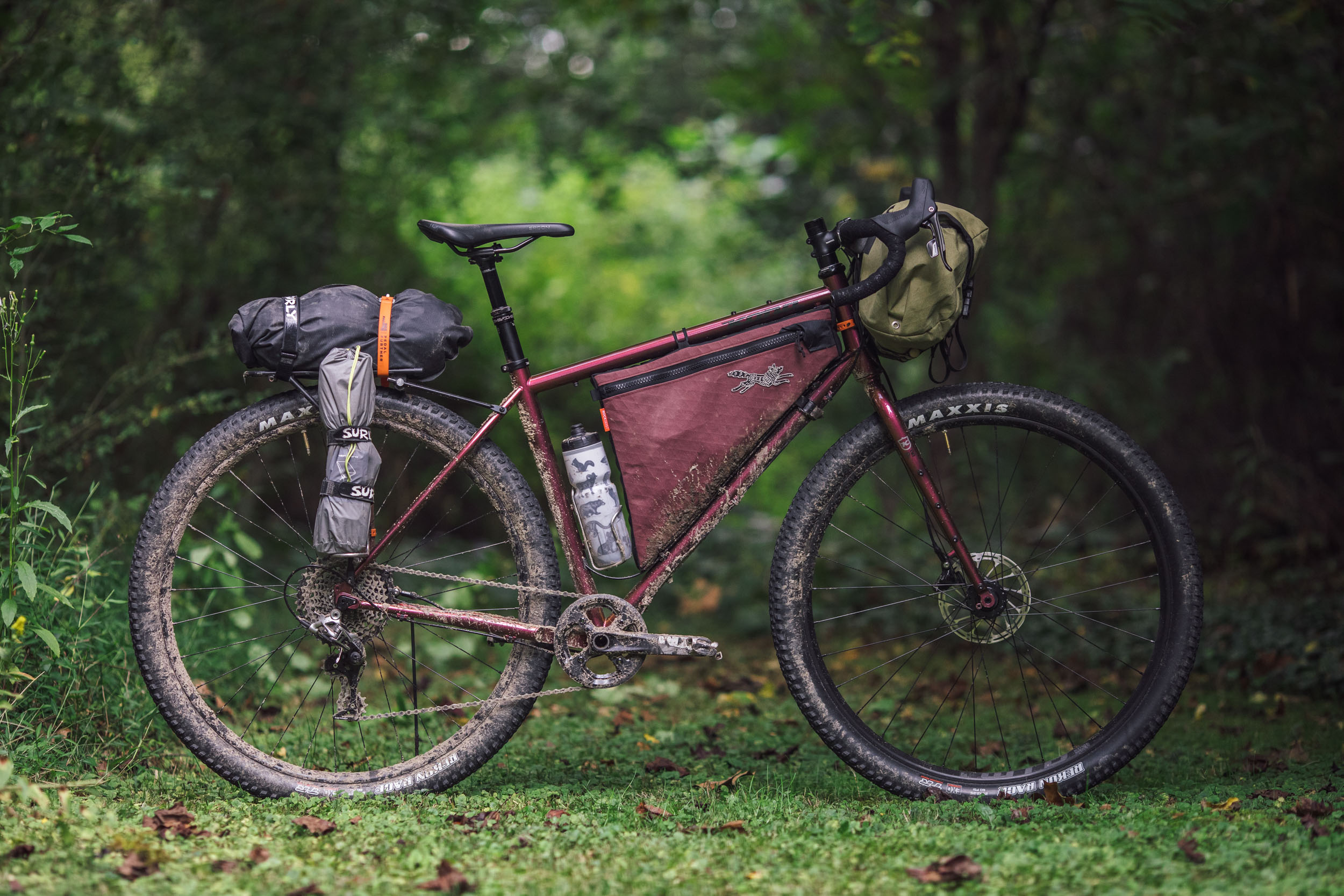Black Mountain Cycles La Cabra Review
Share This
We’ve received more review requests for the Black Mountain Cycles La Cabra than almost any other bike over the years. After getting a hold of one early this spring, the day is finally here. Find our in-depth review of the venerated and unique La Cabra after several months of testing it loaded and unloaded on the trails and gravel roads of Western North Carolina here…
If you’ve poked around our alternative little corner of the bike world long enough, you’ve probably stumbled on Black Mountain Cycles, a small company that made a name for itself in the early days of drop-bar mountain bikes. Their flagship bicycle, the Monstercross, has developed legend status among dirt-drop aficionados since it was released back in 2010. More recently, Black Mountain introduced the Monster Cross Disc (MCD) and the La Cabra, an interesting take on the genre that blends classic lines and old-school mountain bike geometry with a few modern touches. Out of all the suggestions and bike review requests we’ve received from readers over the years, the La Cabra has probably been mentioned the most, so we had to indulge. Continue reading for a detailed review of the Black Mountain Cycles La Cabra after several months of trail riding, gravel grinding, and bikepacking around the mountains of Western North Carolina.

Behind Black Mountain
Back in 2007, Mike Varley opened up a small bike shop called Black Mountain Cycles, named after the most visible geographic feature near the sleepy town of Point Reyes Station, California. Mike already had a longstanding history in the bike industry dating back to 1988 at a bike shop down the coast in Carlsbad. Pacific Coast Cycles sold Salsa, Fat Chance, Ibis, Ritchey, Steve Potts, Cunningham, and Merlin frames and turned them into custom creations for their customers. Building on that experience, Mike became the product manager for Haro and Masi, overseeing the development, design, and component specification for a variety of mountain, road, BMX, and cruiser bikes. All that pent-up knowledge and a love for building bikes from the frame up was the impetus behind Black Mountain Cycles, a company that Mike admits was founded on the early retail mantra be your own brand. As Mike put it, “I took it a step further and created Black Mountain Cycles as both a bike brand and a bike shop.”
Fast forward umpteen years and Black Mountain Cycles is still a one-man show with a working mechanic-forward bike shop and three production bike frames: the Monstercross, a rim-brake clad drop-bar bike that clears 50mm tires; the Mod Zero (formerly the MCD), a disc brake permutation that fits 700C x 50mm or 27.5 x 2.3” rubber; and the La Cabra.
Framing Up La Cabra
Mike claims the La Cabra was born in 1988—the year he first installed drop bars on his mountain bike. It technically wasn’t really fully realized and released until 2021, however, when he had the first batch of frames produced in Taiwan. La Cabra was a direct reaction to people regularly asking whether the MCD could fit wider tires than what was stated on the website. “It seemed like a lot of folks wanted to cram in bigger tires. I didn’t really want to make an MCD+, so I came up with a totally new design to accommodate full-sized mountain bike tires,” explained Mike.
To be exact, the La Cabra will clear 29 x 2.4” or 27.5 x 2.8” rubber. And that’s not the only hint of MTB DNA in this bike. La Cabra has several more features that make it a true drop-bar mountain bike and distance it further from the cross-inspired MCD. Aside from the menagerie of mounts and bosses that we’ll dig into later, the most obvious is the use of 148/110mm Boost hub spacing. Mike decided to go in this direction largely for tire clearance, but I’m happy to see it for more selfish reasons—based on my MTB-heavy parts bin; I have no reason for a 142/100mm wheelset anymore. Honestly—although I thought I’d never say this out loud—I’d like to see Boost spacing become standard on all dirt-specific bikes at this point. I have a feeling there are a lot of folks who’d agree.
Mike designed the frame to be able to run a non-Boost crankset, however. “I find the narrower chainline (47.5–50mm) of non-Boost cranks to work better in high load situations when in the larger cogs. By biasing the crank chainline inboard compared to the rear hub spacing, the chain runs quieter in the larger cogs, has less cross chain, and will result in longer chain and chainring/cog life.” My demo bike came with the non-boost DUB version of the Descendant crankset, claimed by SRAM to be spaced for 135/142 spaced rear hubs. The drivetrain shifted smoothly and quietly.
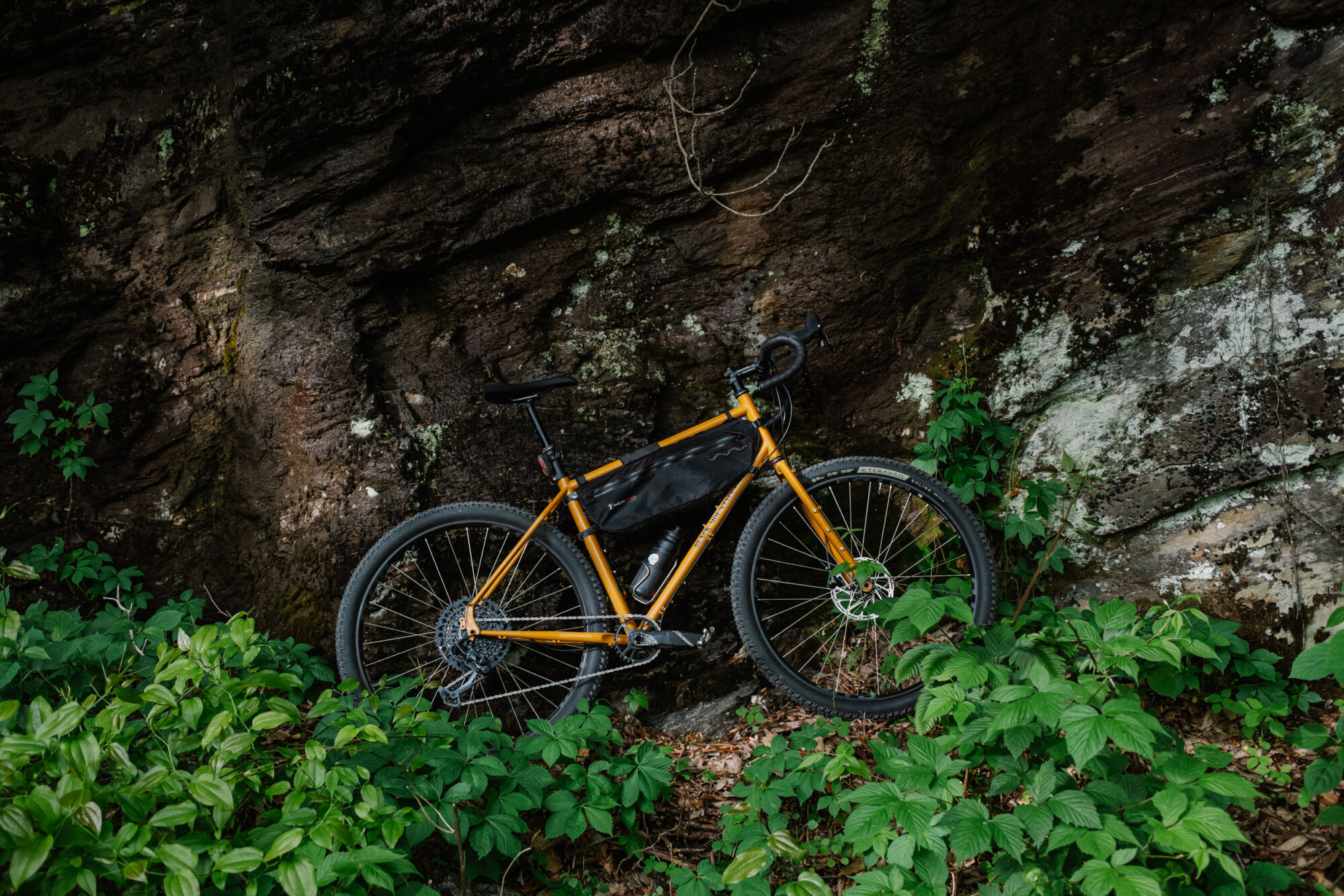
The frame can also be set up with a front derailleur using a 34.9mm clamp. It includes a bottom bracket cable guide with an integrated cable stop for the front derailleur to make this happen. Speaking of olde-world, the head tube features a frame-pump peg for folks interested in mounting a frame pump under the top tube. Other eclectic features include a massive 205mm straight 1 ⅛” head tube and IS brake tabs front and rear for 140mm rear and 160mm front rotors—my review bike had +20 adapters and a 160mm rear and 180mm front rotors.
The La Cabra was also the first Black Mountain frame that’s dropper-ready, featuring internal cable routing and a seat tube with a 30.9mm internal diameter, the sweet spot seat tube size for this style of bike, in my opinion. There are plenty of 30.9 dropper options available, but it’s not overbuilt for a 31.6mm seat post. All other cables are routed externally, which I appreciate.
Build Kit
Black Mountain offers a range of build kits for the La Cabra, in both flat-bar and drop-bar variations. They sent our loaner La Cabra with a build kit similar to the Rival Hydraulic 1×12 that’s listed in the shop section of the website. The only differences are that they installed a dropper post and swapped the 2.35” Schwalbe Thunderburts for 2.3” Teravail Ehlines. Here’s the full list of components as tested:
- Frame: Black Mountain Cycles La Cabra, 20″, Peanut Butter
- Fork: Black Mountain Cycles La Cabra, Peanut Butter
- Rims: WTB KOM Light i30
- Hubs: DT Swiss 350 XD
- Tires: Teravail Ehline 29 x 2.3, Light and Supple
- Crankset: Truvativ Descendant 32t 170mm
- Derailleur: SRAM GX Eagle (with Ratio Fin)
- Shifter: SRAM Rival 1 Hydraulic w/Ratio 12s Conversion
- Cassette: SRAM Eagle, 12-speed 10-52t
- Bottom Bracket: SRAM DUB
- Handlebar: Salsa Cowchipper DLX, 52cm
- Headset: Cane Creek 40 Black
- Brakes: SRAM Rival Hydraulic
- Saddle: WTB Volt Chromoly
- Seatpost: KS LEV 125mm with Wolf Tooth remote
For the money, I think this build kit is pretty dialed. The Ratio/Rival/Eagle 12-speed drivetrain is the best mechanical drivetrain for a drop-bar bikepacking bike, in my opinion. It offers loads of range, smooth shifting performance, and reliability. I’m happy to see smaller companies taking the time to offer this relatively bespoke option. Ehline 2.3” tires are a killer pick for this style of bike, too. They’re fast, supple, and toothy where it counts. And the cockpit, dropper post, and handlebars are all excellent choices. The only thing I changed was the stem just to add a little more reach for my own personal fit. Otherwise, there’s not really anything I’d tweak unless I were to upgrade to a carbon wheelset, which is one of my favorite ways to improve a bike these days.
Geometry and Handling
La Cabra’s geometry will probably be refreshing for some folks and the source of head scratching for others. It’s relatively straightforward, but it’s still a departure from a lot of drop-bar 29ers in its class. In short, Black Mountain avoided the temptation to go with the relatively slack 69° head tube angle that’s become the norm for this style of bike. As you can see in the comparison chart below, it has the steepest head tube and shortest wheelbase out of all these other bikes I’ve tested or ridden.
| Metric | Black Mtn La Cabra (20″) | Cotic Cascade (L) | Salsa Fargo (L) | Salsa Cutthroat (58) | Tumbleweed Stargazer (L) | Kona Sutra LTD (56) |
|---|---|---|---|---|---|---|
| Stack | 660 | 633 | 671 | 645 | 653 | 627 |
| Reach | 390 | 432 | 385 | 395 | 389 | 400 |
| Head Angle | 70.5° | 69° | 69° | 69° | 69° | 69.5° |
| Seat tube angle | 72.5° | 74° | 73° | 74° | 72.5° | 73.5° |
| Fork Offset | 50 | 44 | 51 | 51 | 55 | 55 |
| Trail | 78 | 96 | 88 | 86 | 82 | 79 |
| BB drop | 70 | 70 | 70 | 70 | 63.5 | 72 |
| Chainstay length | 444 | 438 | 445+ | 445 | 450 | 445 |
| Wheelbase | 1091 | 1136 | 1110+ | 1110 | 1120 | 1106 |
Scrutinizing the numbers alone, I was a little worried I might not gel with the La Cabra. I typically like the more modern geometry of many of the bikes listed above. I kept an open mind, however, and thought about Joe Cruz’s staunch opinion on the current crop of drop-bar bikes—that most of them steer too slowly and feel sluggish in the handling department.
Looking at the angles, La Cabra comes off more like a mid-nineties Rockhopper than it does a contemporary dirt-drop mountain bike. And after putting some miles on it, I don’t think that’s a bad thing. The La Cabra indeed felt a little more frisky and dynamic than a bike like the Stargazer, which is the only other drop-bar bike I had at my disposal for a side-by-side comparison during my test period. La Cabra seems to have significantly quicker steering and reacts with tack-sharp accuracy to changes and features in the terrain.
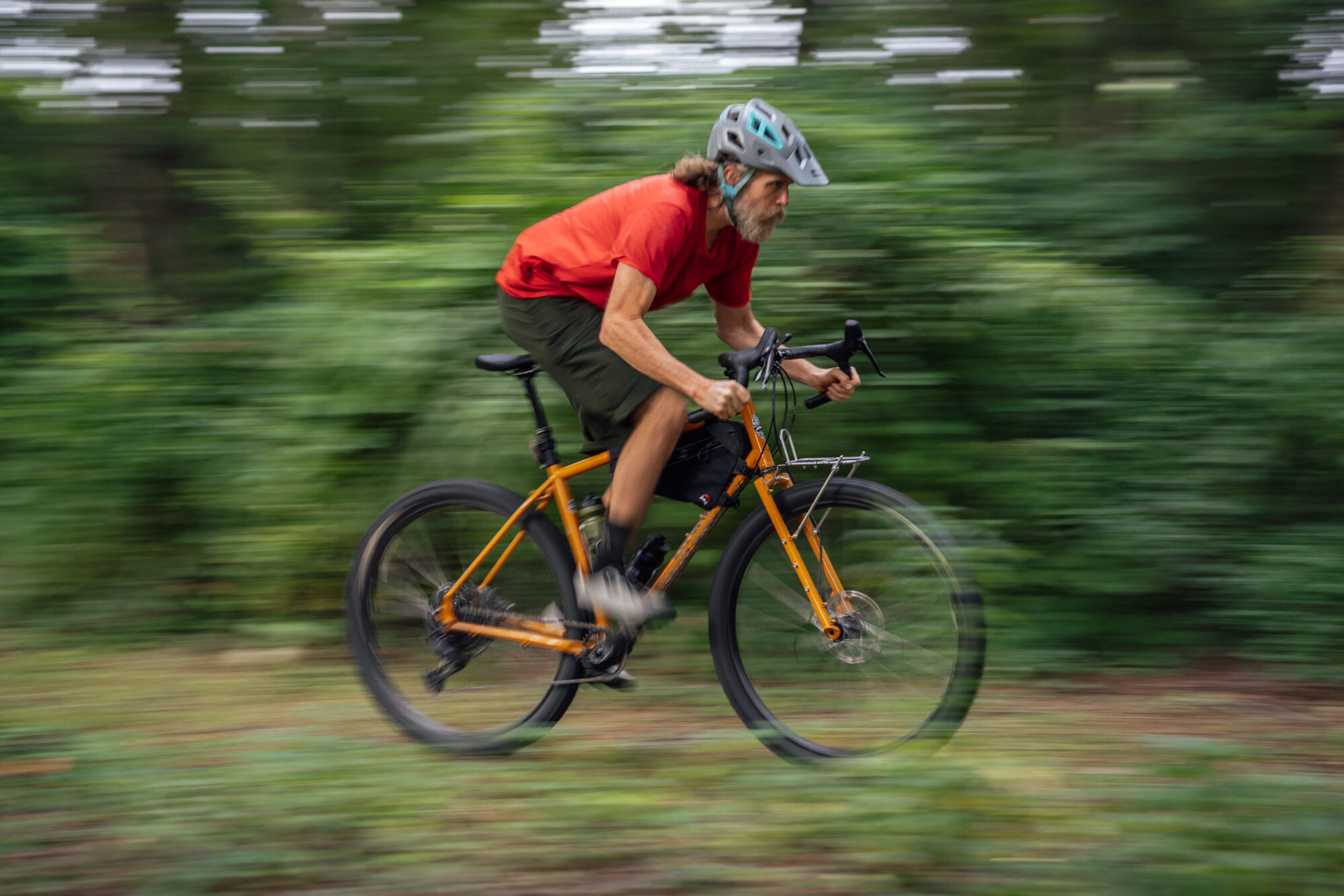
Looking at the numbers, it’s still a high-trail bike, despite the fact that it has the lowest numerical trail of any of the bikes listed above. The interesting thing about the La Cabra is that it seems to exhibit an ideal balance between light and fast handling and stability. I was pleasantly surprised with how confident it felt when descending, particularly on fast gravel, and how stable it was when climbing slowly. It feels generally solid and in control, perhaps benefiting from longer chainstays and a low bottom bracket. It loses a little bit of that quality when descending on more chunky trails due to its steeper head tube, but it can still hold its own.
Further Down the Trail
Scrupulous readers may have noticed that I haven’t yet delved into frame tubing. Like 90% of the steel bikes listed above, the Black Mountain Cycles La Cabra is made from 4130 double-butted chromoly steel, so there’s nothing particularly special about it. As Mike put it, the tubing was specced “in diameters and wall thicknesses suitable for the purpose of the bike and its use. Nothing special, but specifically spec’d.” Still, it was pretty clear from the first ride that care was put into the tubing selection and construction. The La Cabra frame clearly isn’t an overbuilt frame. It has a lively feel when unloaded, which wasn’t a happy accident, according to Mike.
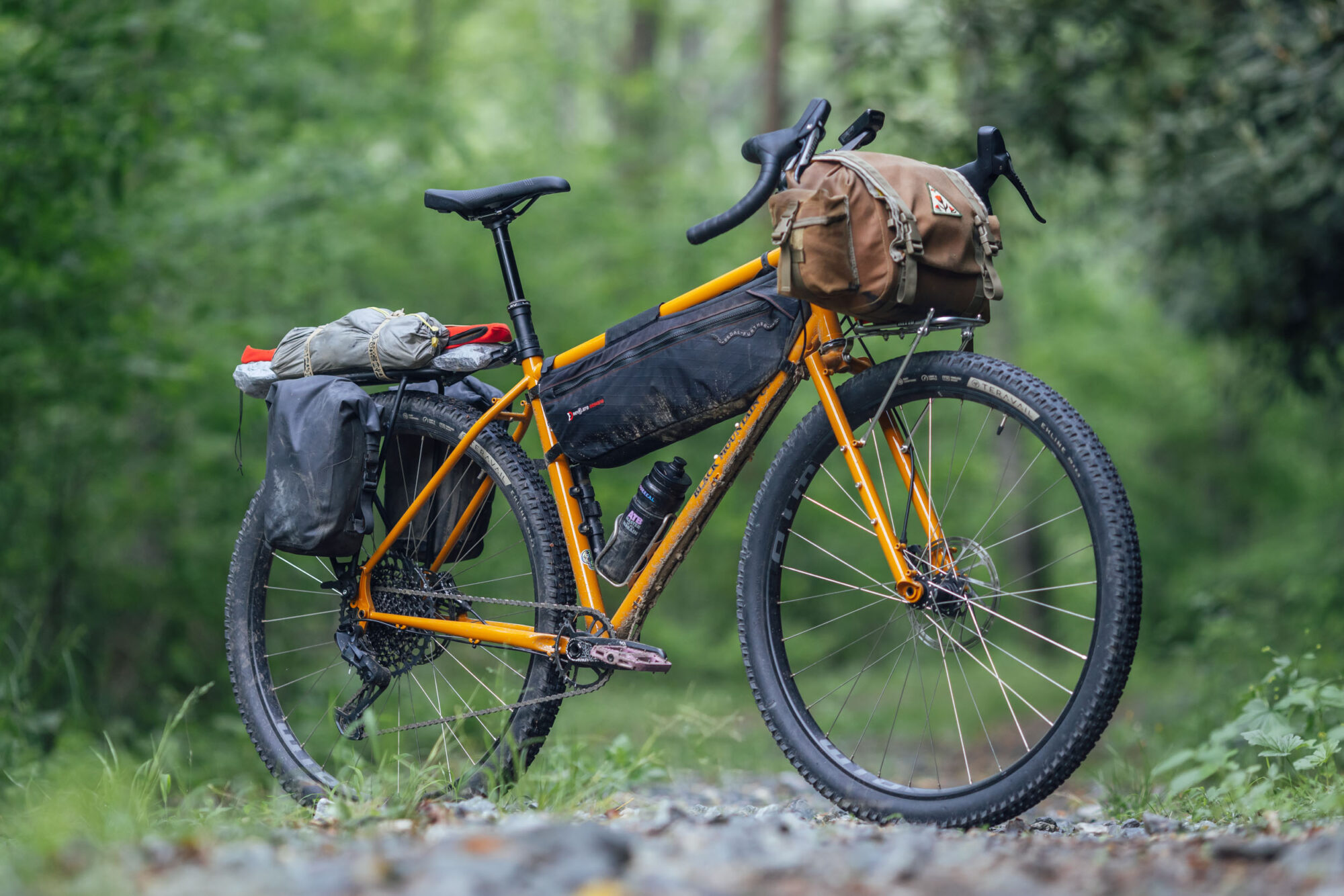
One small gripe I had is that the fork felt a little harsh at times. It’s a bit odd since the rear end of the bike feels fairly supple and comfortable. It’s almost as if the front and rear of the frame don’t quite match. To be clear, I don’t consider this a dealbreaker, and I wouldn’t say that the fork is freakishly stiff, but as a reviewer, it’s my job to pick bikes apart, and it’s something I noticed when contemplating the feel of La Cabra’s tubeset.
Loaded Up
In and of itself, the La Cabra fork is a utilitarian beast. The point made in the last paragraph probably makes a good case for a more front-loaded style of bikepacking, and there are plenty of options. It has mid-blade and top barrel mounts, three-pack mounts on each leg, and not one, but two pairs of lower rack mounts. When I asked Mike about the reasoning for the two lower mounts, he sent this image that was taken while verifying braze-on locations for all the various rack styles—including but not limited to a small Nitto rack, the Tumbleweed T Rack, and a Tubus Lowrider. There’s even a mount welded to the bottom of the steerer tube for installing a fender.

There’s no shortage of mounts on the frame, either. It has provisions for a rear rack and fender, a three-pack of mounts under the downtube, and three pairs of bottle cages in the triangle. The only thing I found a bit odd is the placement of the bottle cage pairs in the triangle. A lot of frames place the seat tube mounts toward the bottom, which pushes the downtube mounts upwards toward the front. This allows you to fit two bottles and a half-frame bag on a larger frame or a wedge-style frame bag with a large one-liter bottle on the seat tube. La Cabra has the seat tube pair of bottle cage mounts moved upward and the downtube lower pair pushed about as far as they can go rearward toward the bottom bracket. I suppose you could have a unique triangle bag made that left space for two bottles on the downtube, but this configuration is limiting otherwise.
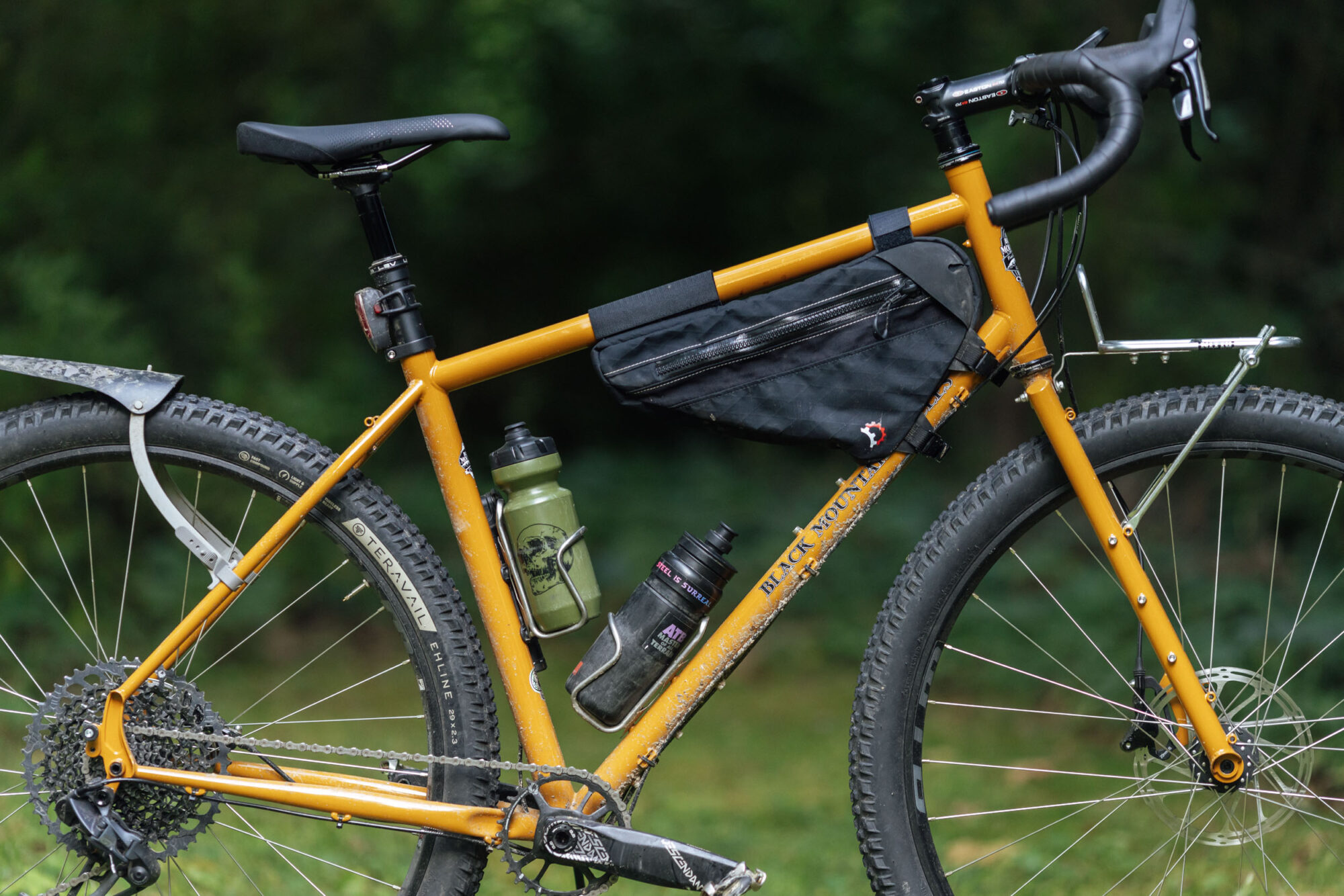
Circling back to the tubing and frame design, La Cabra is designed for no load or a relatively light load, in my opinion. I took it on a couple of overnighters, once overloaded with a rack and panniers, a six-pack of beer, fly fishing equipment and wading shoes, a heavy full-frame camera and lenses, and food that was geared more toward backcountry satisfaction than traveling light. I could feel it in the frame. I wouldn’t say it was bad, but it was definitely a little wiggly. As mentioned, I think it would be better served for a lighter packing style or loading with a bias on the fork. I could see a medium-heavy load working well with hefty cargo cages/bags on the fork and a top-loader on the bars, then a small rack/drybag combo or seat pack out back. I should also add that I prefer the feel of this tubeset to others that I would consider a little overbuilt.
Climbing Forward
Last but not least, the name. As many of you probably know, “La Cabra” is Spanish and translates to “The Goat.” I was well aware of that the first time I rode it, but I’m pretty sure it wasn’t a placebo effect that I experienced when I thought to myself, “Damn, this thing can climb.”
Mike originally designed this bike for himself, and when I asked him how he came up with the angles for La Cabra, he replied, “I like to climb and find that this geometry works for me by tracking a bit better.” At that point, the bike didn’t have a name. In this instance, the cart pretty much came before the horse, or the bike before the goat, rather. Mike added, “Out on a ride with an early prototype, I was navigating a rocky uphill section and I thought, ‘This thing climbs like a goat.’ It felt nimble and pedaled well and became La Cabra.”
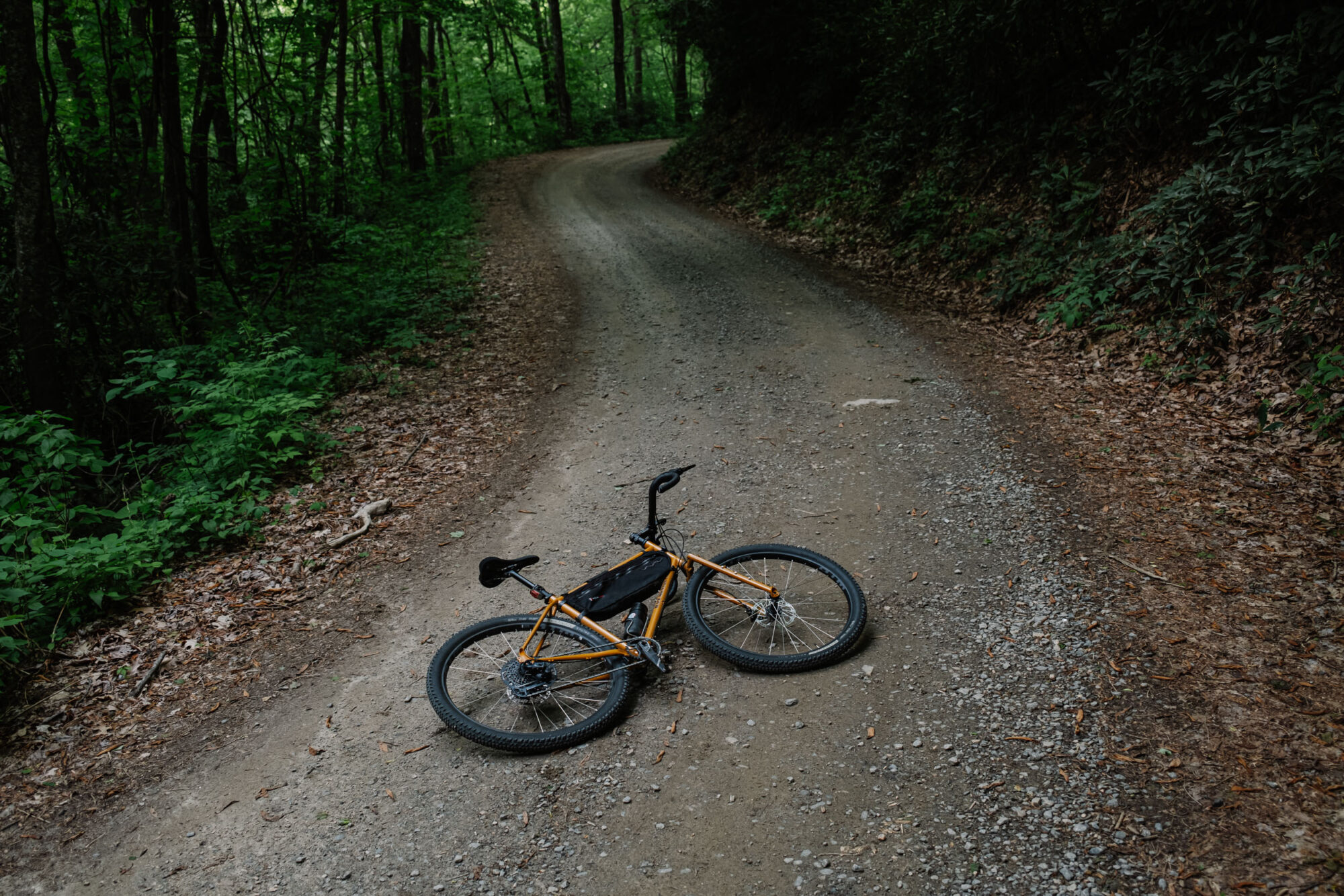
To get a little more granular in my analysis, a couple of characteristics really stood out to me on La Cabra. One is that it seems to be able to maintain traction, both cornering and even out of the saddle on steep climbs. It’s also one of those super-stable bikes that you can pedal at really slow speeds and maintain balance. Added up, it makes a bike that can slowly claw and ratchet up just about anything. I love it when bikes have this quality, allowing you to patiently churn through slow technical bits and work your way through them.
The Black Mountain Cycles La Cabra is available in sizes 16″, 18″, 20″, and 22″ (plus a 15″ size produced in collaboration with Blue Lug that’s not available in the US). The current batch comes in a “Peanut Butter” paint color based on PMS 7511.
- Model/Size Tested: Black Mountain La Cabra, Size Large
- Actual Weight: 27.68 lbs (12.56 kg)
- Place of Manufacture: Taiwan
- Price (as specced): $4,500
- Price (frameset): $1,195 including thru-axles
- Manufacturer’s Details: Black Mountain Cycles
Pros
- Balanced and neutral geometry works well for a range of riding
- Segmented fork, straight steel tubes, and detailing gives it a classic aesthetic
- Loaded with mounts and provisions
- Good tire clearance
- Boost hub spacing plays nice with a mountain bike-centric parts bin
- Non-nonsense frame spec with a few modern touches set it apart
- Excellent and thoughtful selection of components at a relatively good value
Cons
- Bottle cage placement in the frame triangle isn’t conducive to two bottles and a half-frame bag
- Fork feels a bit harsh compared with the more supple rear end
- Gets a little wiggly when heavily loaded
Wrap Up
There’s a lot to like about the Black Mountain Cycles La Cabra. It has a unique balance of new standards and classic looks. Its name pretty much spells out how it rides with a little visualization. La Cabra can climb extremely well, and it possesses a remarkable balance between surefooted stability and the capacity to react quickly and jump to another line when needed. It’s confident going downhill and can pretty much clamor up anything if you have the legs. It’s also loaded up with mounts and possibilities and is ready for light touring and bikepacking on a variety of terrain.
There’s not really anything I’d change about it aside from the bottle cage mount placement, which is based purely on personal preference. That’s a good thing, I suppose, as there are no tweaks on the books for the next batch of La Cabras. According to Mike, “The only change for the next run is to update the 15″ size to 16″ and the 16″ size to 17″ as requested by my distributor in Japan, Blue Lug.”
Related Content
Make sure to dig into these related articles for more info...
Please keep the conversation civil, constructive, and inclusive, or your comment will be removed.






